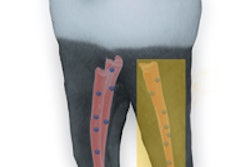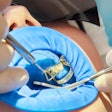
Less than half of general dentists always use rubber dental dams during root canal therapy, according to a new study. The finding is concerning because dental dam use increases patient safety and improves the chances of a successful treatment.
 Gregg H. Gilbert, DDS.
Gregg H. Gilbert, DDS.Lead author Gregg H. Gilbert, DDS, and colleagues surveyed nearly 1,500 dentists about their attitudes toward rubber dam use during root canal therapy. In their study, they found a significant difference between actual practice and the presumed standard of care (BMJ Open, December 9, 2015).
"The study calls into question whether or not there's really a standard of care if the majority of general dentists are not following that standard," Dr. Gilbert said in an interview with DrBicuspid.com. He is a professor and the chair of the department of clinical and community sciences at the University of Alabama at Birmingham (UAB) School of Dentistry.
Opinions on dental dams vary
Rubber dental dams have several benefits during root canal therapy. The American Association of Endodontists (AAE) lists them as the standard of care in a position statement.
"Tooth isolation using the dental dam is the standard of care; it is integral and essential for any nonsurgical endodontic treatment," the AAE wrote in the position statement. "Only dental dam isolation minimizes the risk of contamination of the root canal system by indigenous oral bacteria. The dental dam also offers other benefits, such as aiding in visualization by providing a clean operating field and preventing ingestion or aspiration of dental materials, irrigants and instruments."
In addition, rubber dams help protect against something going wrong during a procedure, which could result in litigation against the clinician, Dr. Gilbert noted.
"For example, if a root canal treatment instrument went down -- aspirated or swallowed -- and they weren't using a rubber dam. Then, they probably wouldn't have a good case to stand on," he explained. "A rubber dam helps prevent that."
To see if dentists followed through on using the dams, Dr. Gilbert and colleagues surveyed 1,490 general dentists in the national dental practice-based research network. The dentists, who all performed at least one root canal per month, reported their beliefs about the effectiveness, convenience, and ease of rubber dams compared with other isolation techniques.
The researchers found only 47% of dentists always used a rubber dental dam during root canal therapy, and an additional 16% used one 90% to 99% of the time. Dentists who thought rubber dams are easy to place, effective, and not affected by patient factors were significantly more likely to use one than dentists who believed dams are inconvenient, time-consuming, and complicated by patient factors.
Creating a standard of care
One survey factor that stood out to Dr. Gilbert during this study was that many dentists used a space at the end of the survey to add additional notes, something that is atypical for most surveys. In the space, he said, dentists elaborated and defended their opinions about the dams, whether they regularly used them or not.
"For those who say that they do not use a rubber dam all the time, they were basically using that open-ended space in the survey to explain why. Basically, they were communicating that they haven't had any problems with it so far, and they've been in practice for quite some time, and there's not strong evidence about the treatment affecting this aspect," he said. "And then there were also those who use a rubber dam routinely. ... Typical comments in that space were: 'We really feel like all dentists should be using rubber dams, and if they're not, we would encourage patients to ask the dentists: Why are you not using it?' "
With many varying opinions on dental dam use, the question of the standard of care is called into the question. Dr. Gilbert suggested the profession needs to figure out whether a rubber dam is the standard.
"It would be good to get the specialty organizations engaged with the general dentists to come up with a consensus about whether there should be a standard of care in this area," he said. "And, if so, what it should be because, currently, the survey said we just don't have that consensus."
And should the profession decide to support rubber dams, Dr. Gilbert is already thinking about another survey.
"We're pondering designing a study to try and improve the usage if the profession does indeed come to consensus," he said.



















